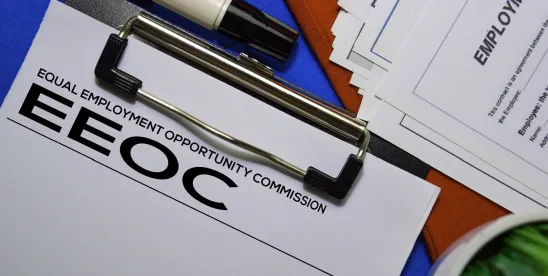On April 29, 2024, the Equal Employment Opportunity Commission (EEOC) issued its long-awaited workplace harassment and enforcement guidelines to help employers understand what type of conduct the agency considered to be unlawful harassment.
The EEOC’s guidance focuses on three components of a harassment claim:
- covered bases and causation (i.e., whether the conduct was based on an individual’s lawfully protected characteristic such as race or sex);
- the nature of the harassment resulting in discrimination affecting a term, condition, or privilege of employment; and
- a basis for holding the employer liable for the conduct.
The guidance also addresses systemic harassment and enforcement. Overall, the new guidance is a good resource for addressing harassment and retaliation and reflects the evolving nature of remote work and recent Supreme Court case law expanding protections for gay and transgender employees.
Some highlights from the guidance:
- Sex-based discrimination under Title VII includes employment harassment based on sexual orientation or gender identity, including how that identity is expressed. The EEOC points out, for instance, that repeated and intentional use of a name or pronoun inconsistent with the individual’s known gender identity, called “misgendering,” could be considered harassment.
- The EEOC recognizes that where an employee experiences harassment not based on a protected category, there is no causation to support an actionable discrimination claim.
- The EEOC also stresses that, for workplace harassment to violate the law, not only must it be based on a protected category, but it must also affect a term or condition of employment. The EEOC notes that the federal statutes do not impose general civility codes that cover “run-of-the-mill boorish, juvenile, or annoying behavior” but requires tangible or economic effects.
- The guidance also reaffirms that, to be actionable harassment, the conduct must be severe or pervasive and must be viewed in light of the totality of the circumstances. By way of example, the EEOC notes that a loan remark by a co-worker about a female menstruating is insufficient to create an objectively hostile work environment, despite it being offensive.
- Finally, in this guidance, the EEOC recognizes an employer’s defense to hostile environment claims where the employer takes prompt remedial action to prevent and correct the harassment and the complaining employee unreasonably fails to use the employer’s complaint procedure or take other steps to minimize the harm from the harassment.
The new Enforcement Guidance is an excellent resource for reviewing the current law on workplace hostile environment and should be very helpful for HR professionals and in-house counsel. Of course, employers should take the time to review current policies and complaint history and make sure they are updated consistent with this guidance.




 />i
/>i
